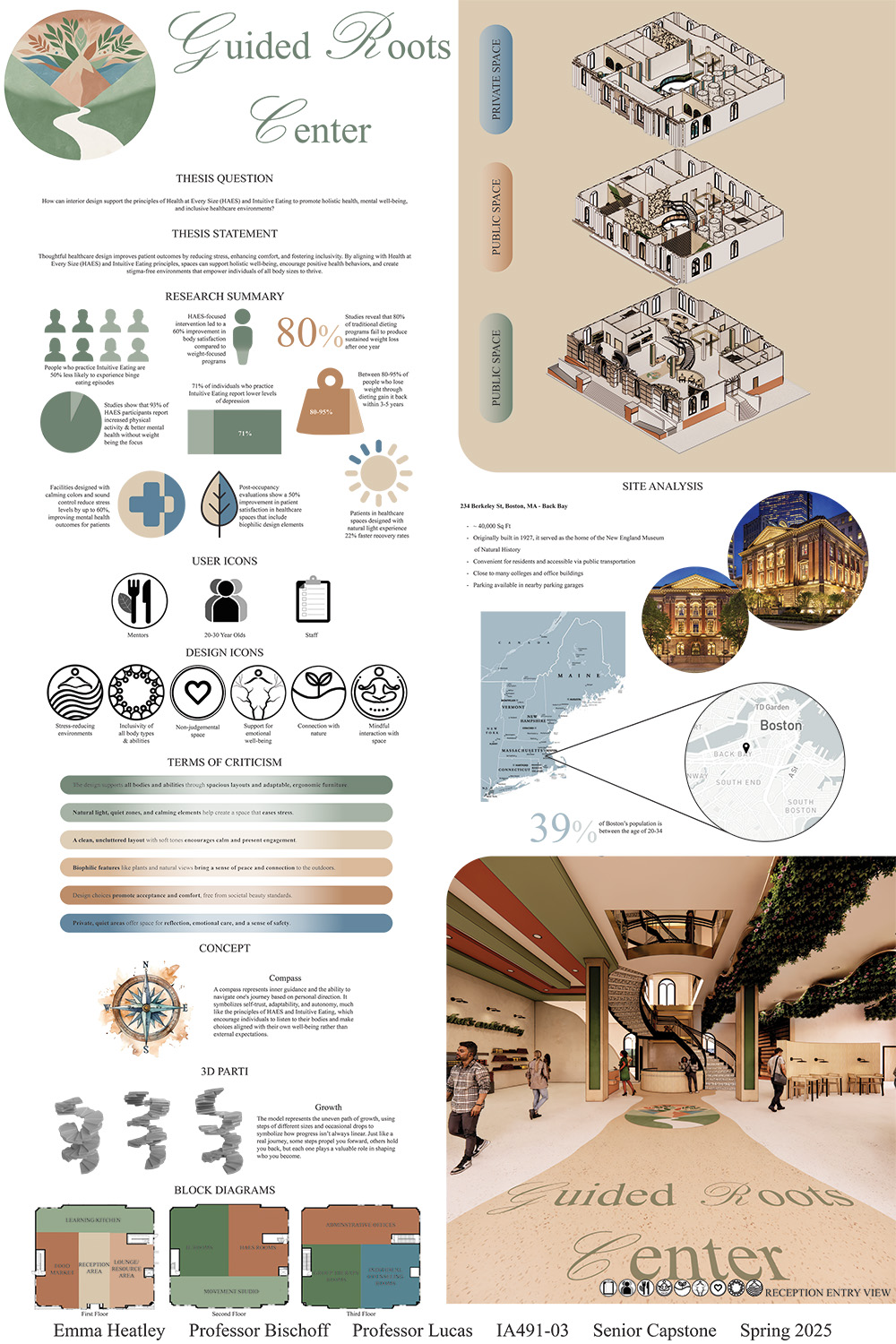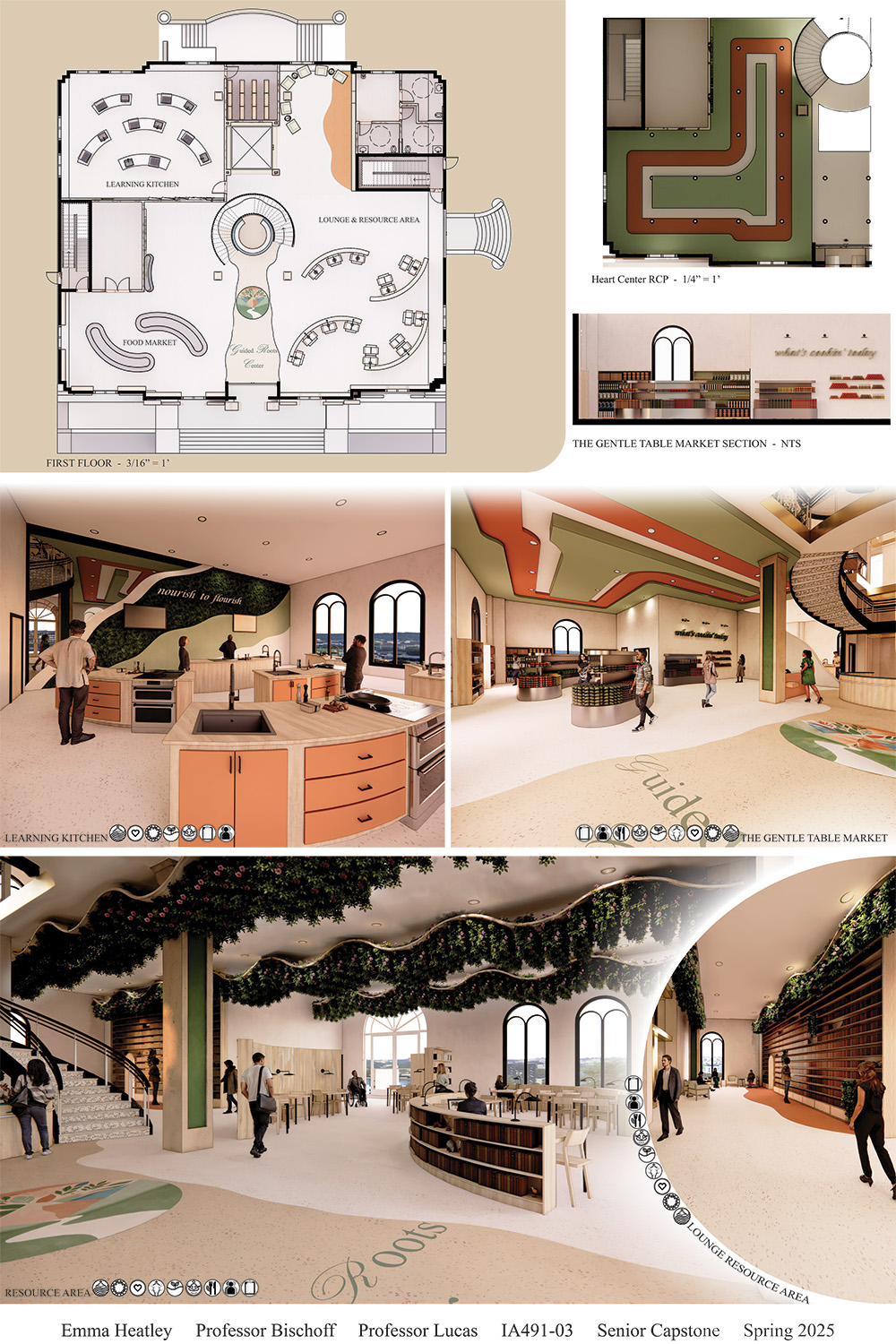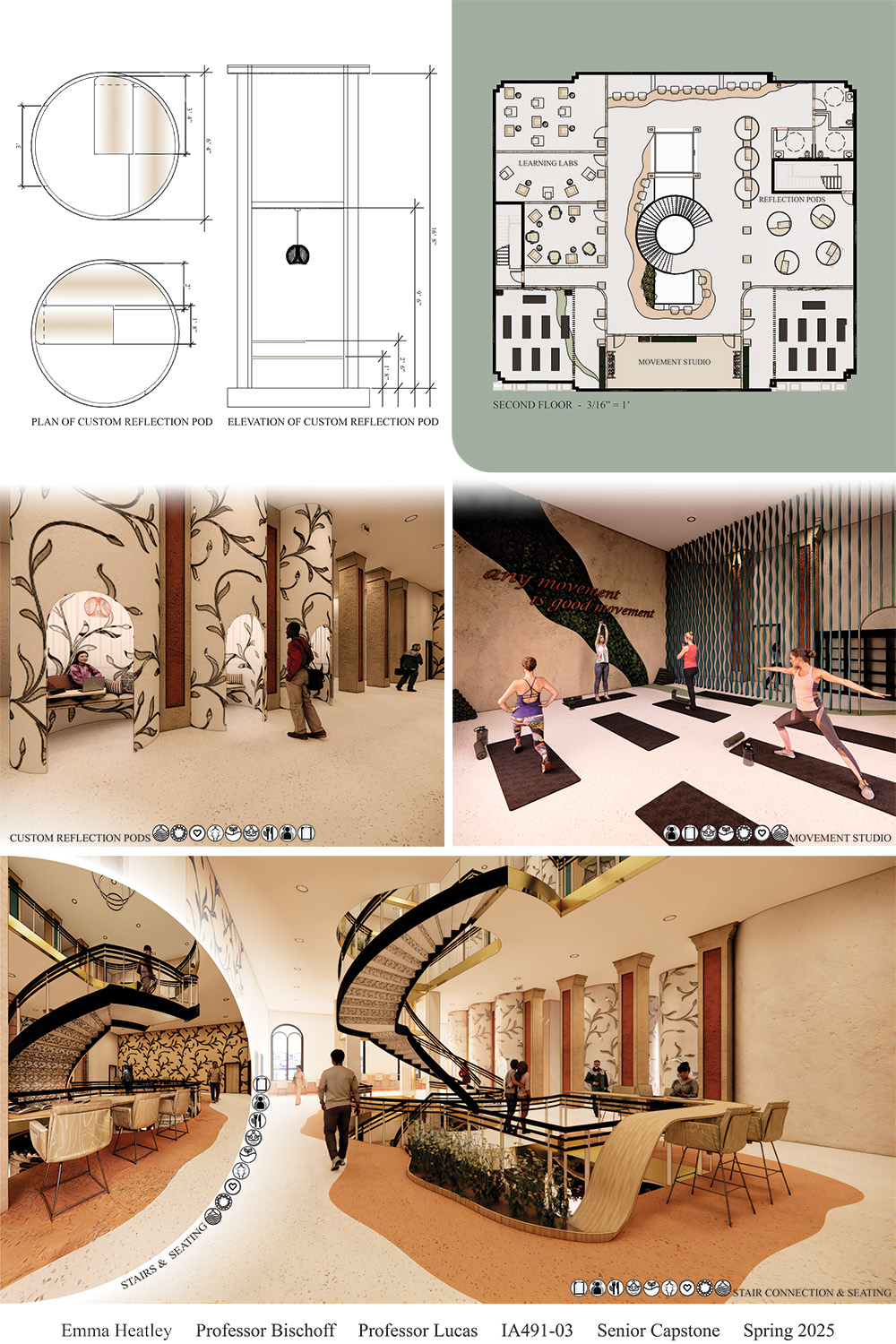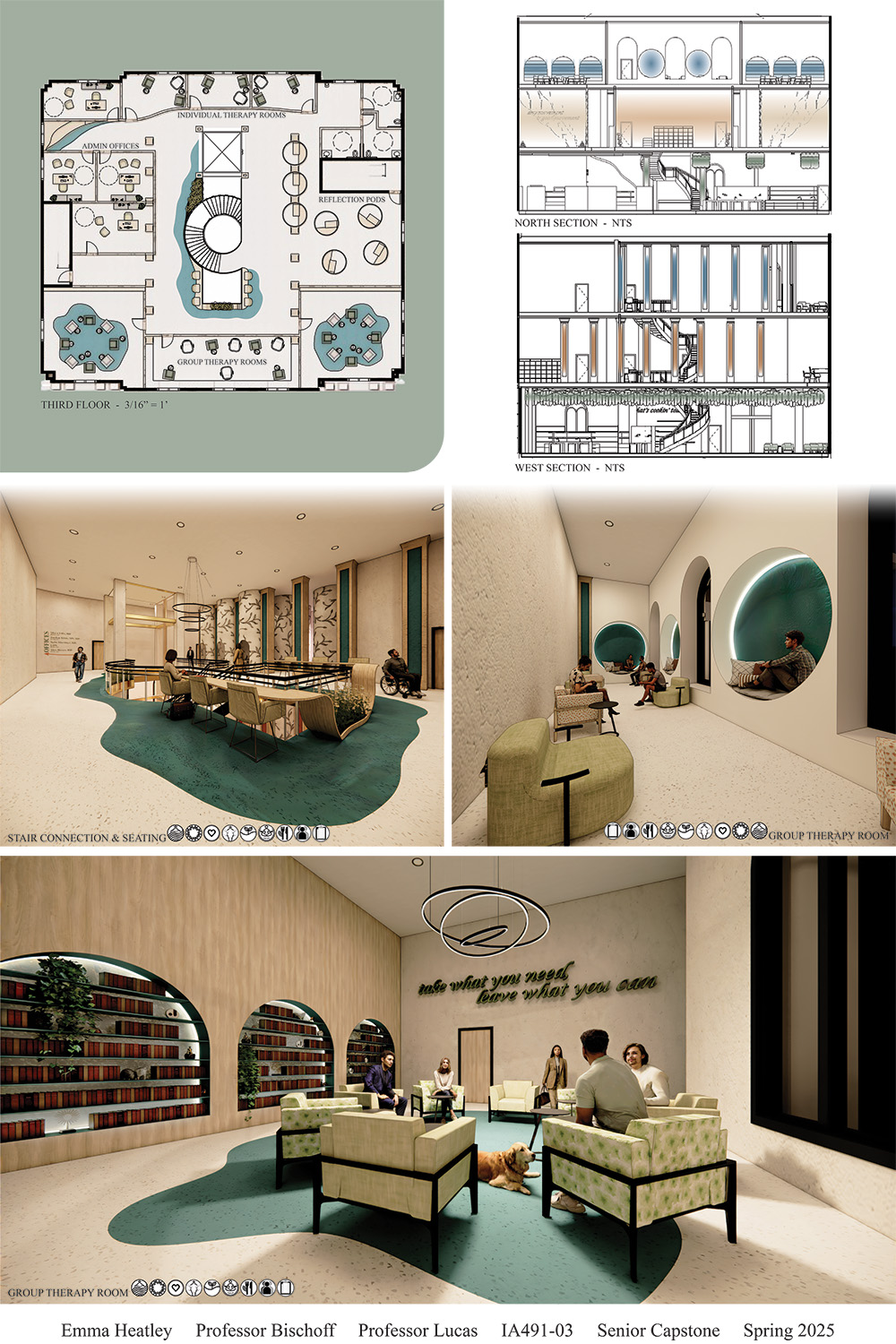Artist Biography
Emma Heatley will be graduating from Endicott College in May with a Bachelor of Fine Arts in Interior Architecture. Originally from Southern Maine, Emma has spent her undergraduate years developing a strong foundation in both the technical and creative aspects of design. She has been recognized on the Dean’s List. Through Endicott’s internship program, Emma has gained hands-on experience at several design firms, where she developed skills in space planning, materials selection, and client communication. These opportunities have helped her grow as a designer and prepared her to take the next steps in her professional career. Emma looks forward to bringing her empathetic design approach and collaborative spirit into the industry. She hopes to create meaningful spaces that support emotional well-being and reflect the everyday lives of the people who use them.
Thesis Abstract
Guided Roots Center explores the design of a wellness center guided by the principles of Health at Every Size and Intuitive Eating, which advocate for inclusive, non-diet approaches to health and well-being. The goal is to create a space that supports individuals in reconnecting with their bodies through self-compassion, autonomy, and community care. Through intentional spatial planning and material selection, the design promotes comfort, safety, and accessibility for people of all body sizes and abilities. Key areas include communal gathering spaces, one-on-one consultation rooms, quiet sensory zones, and open areas for movement and rest. Each element was chosen to reduce stigma, avoid triggering design features, and foster an environment of dignity and respect. The resulting layout reflects a trauma-informed approach that centers emotional well-being as a fundamental part of physical health.
Natural textures, biophilic elements, and soft, calming color palettes are used to support nervous system regulation and provide a grounding atmosphere. Flexible furnishings and adaptable spaces allow users to interact with the environment based on their unique needs and preferences. The design moves away from rigid, clinical aesthetics and instead embraces warmth, softness, and ease. This project also challenges the narrow ideals of wellness spaces that often exclude or alienate individuals in larger bodies. By embedding HAES and IE values into the architectural framework, the space becomes a tool for advocacy and empowerment. Ultimately, the wellness center serves as both a physical and philosophical response to the harms of diet culture, offering an alternative model for inclusive, sustainable self-care.




